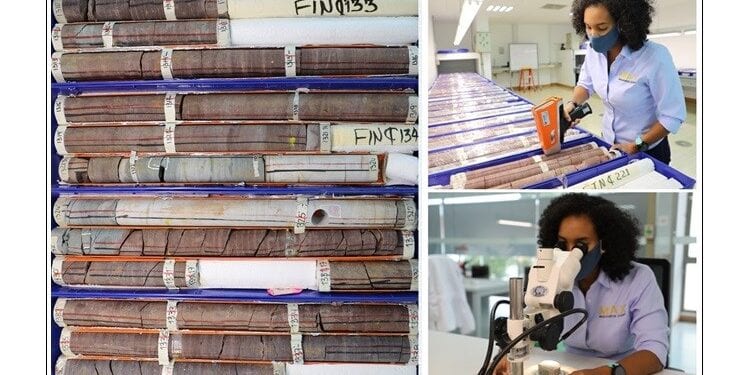Mineralisation Extends To 400M Depth From Surface
Max Resource Corp. (TSXV: MXR) has discovered copper mineralisation through XRF analysis of historic drill core from the CESAR basin structural study, North Eastern Colombia.
“The discovery strongly suggests the CESAR copper-silver mineralized horizon at surface, continues down dip in excess of many kilometres,” CEO, Brett Matich, said.
The XRF analysis confirms the CESAR project as a regional stratabound copper-silver system, analogous to Poland’s world-class Kupferschiefer deposits.
“Over the past year, Max has demonstrated the regional scale and lateral continuity of the CESAR stratabound copper-silver mineralisation, already traced for over 200-kilometres along strike and now encountered in historical drill core extending down dip to depths in excess of 400-metres,
“Max’s copper exploration exposure strengthens as copper prices climb above US $8,100 per ton, surpassing a near 8-year high reached in December. In addition, CESAR also provides silver and we have the RT Gold project in Peru, providing significant exposure to high-demand metals.”
The structural study is being conducted by Max in collaboration with the Ingeniería Geológica Universidad Nacional de Colombia (IGUN). Historic drill core containing favourable Jurassic stratigraphy, is analysed with an XRF unit for elevated copper readings.
Mr Matich said Max will continue with drill core analysis, further advancing the structural model by superimposing drill holes and identified core intervals with copper on to seismic sections and projecting the mineralised horizon to surface. All observed data is being recorded into the company database to construct a 3D model.
In addition, the structural study provides a guide for Max’s land expansion strategy, and its on-going CESAR copper-silver exploration programmes.
The copper enriched intervals of the historic drill core are hosted in grey sandstone that changes to red (hematite rich) outside copper enrichment.
This zonation from red hematite enriched sandstone to grey is very characteristic of Poland’s Kupferschiefer and represents reducing environment where copper was precipitated from solution to form the Kupferschiefer copper-silver deposits.
The Kupferschiefer deposits, Europe’s largest copper source, produced 3MT of copper in 2018 and 40 million ounces of silver in 2019 from an orebody 0.5 to 5.5-metres thick, grading 1.49% copper and 48.6 g/t silver. This silver yield is almost twice the production of the world’s second largest silver mine.












